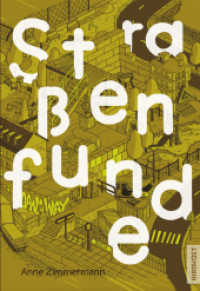Full Description
"4MAT® has transformed my teachers from adequate to outstanding."
—Robin Kvalo, Principal
Rusch Elementary School, Portage, WI
"Principals and teachers have continually requested 4MAT® training as the 'basic core' of knowledge for teachers in our 80,000-student district. We have trained literally hundreds of teachers over the past ten years to 'teach around the 4MAT® wheel' and meet the learning needs of all their students."
—Patricia Shelton, Director of Certification and Professional Development
Brevard County Schools, FL
What we need to know about our students is not "How much?" intelligence, but "What kind?"
Learning styles are linked to preferences in the ways people perceive and process experience. Bernice McCarthy's unique 4MAT® cycle is a brain-based teaching method that emphasizes diverse learning styles, honors learner individuality, teaches concepts as well as facts, and improves student thinking and performance on traditional as well as high-stakes assessments.
With 25+ years of field testing and field use supporting its effectiveness, the 4MAT® method uses a 4-quadrant cycle of learning that begins by engaging learners through direct experience, moving them toward
Reflective observation
Abstract conceptualizing
Active experimentation and problem-solving
Integration of new knowledge and skills
Learning happens as we unite our experiences and their meaning with actions that test those meanings in the world. This exciting new resource offers schools a powerful tool to enhance teaching and learning for students with all learning styles, backgrounds, and preferences.
Contents
Foreword by Gordon Cawelti
Prologue
About the Authors
Acknowledgments
Chapter 1: Learning Styles
A Cycle of Learning
How Perceiving Defines Us as Learners
How Processing Defines Us as Learners
The Processing Dimension and John Dewey
Perceiving and Processing Style
Type One Learners: Why?
Type Two Learners: What?
Type Three Learners: How Does This Work?
Type Four Learners: What If?
Putting It All Together
Chapter 2: A Cycle of Learning
First We Experience
Then We Reflect
Then We Conceptualize
Then We Act
Finally We Integrate
The Cycle Begins and Ends with the Individual
Any Successfully Completed Cycle Will Flow to Reflection on Itself
The Cycle Is a Consummate Design for Curriculum
The Cycle Encompasses Important Assessment Benchmarks
The Cycle is a Showplace for Different Styles at Different Places
Think About Yourself
Other Ways to Look at the Quadrants
Chapter 3: Teaching Around the Cycle
Quadrant One: Answering the "Why?" Question
Quadrant Two: Answering the "What?" Question
Quadrant Three: Answering the "How?" Question
Quadrant Four: Answering the "If?" Question
Plot Your Quadrant Teaching Score
Chapter 4: The Brain-Mind Learning System
Left- and Right-Mode Processing
The Brain Research
Left and Right: The Two Hemisphere Continuum
Knowing
Language
Emotion
Memory
Student Learning Strategy Preferences
Teaching Strategies That Favor the Right Mode
A Bushel Basket of Right Mode Activities
Graphic Organizers
Chapter 5: Overlaying Right- and Left-Mode to Complete the 4MAT Cycle
Connect
Attend
Imagine
Inform
Practice
Extend
Refine
Perform
All Real Learning Leaves Us Changed
Chapter 6: Teaching From Concepts
Working With Concepts
Different Teachers, Different Concepts
Concepts and Standards
4MAT in Action
Chapter 7: The 4MAT Design Overlay (Lesson Planning)
The Information Delivery
The Skills Practice
The Intended Outcomes
The Connection
Sharing the Connection
The Learning Used
Critiquing the Work
The Image That Connects
Adding the Assessments
Your 4MAT Plan: A Final Look
Epilogue
Bibliography
Index

![Cognitive Individual Differences in Second Language Acquisition : Theories, Assessment and Pedagogy (Trends in Applied Linguistics [tal])](../images/goods/ar/work/imgdatag/15015/150152366X.JPG)






